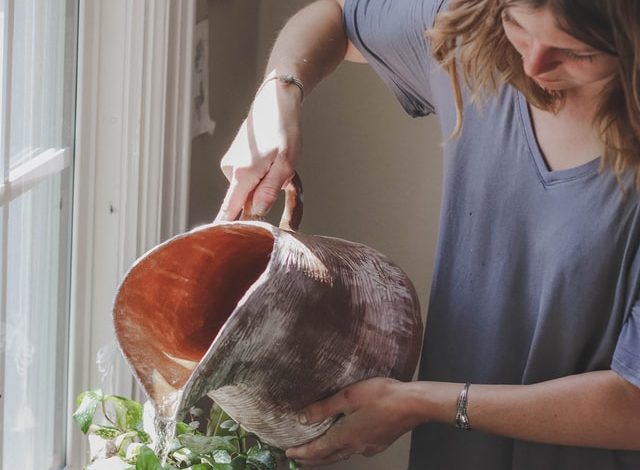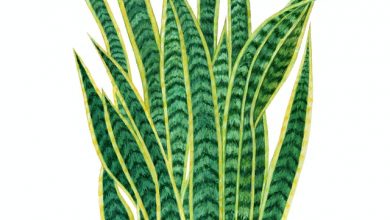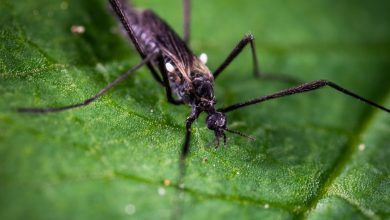How Often to Water Houseplants

Learning how to water your houseplants properly is one of the most important things you can do to support their healthy growth; on that note, it’s also one of the more complicated concepts to get right. From how much water, to the type of water, to when the watering takes place – all of these and more factor into the proper care of your indoor plants. Specifically, how often your houseplants are being watered can have a significant impact. Below, we will review everything you need to know about keeping your plants on the right watering schedule to ensure they can grow and thrive within your home.
General Rules for When to Water
How often you water depends a great deal on the type of plant. However, there are certain commonalities shared between plants in the watering department. Here are some general rules to follow when determining when to water your houseplants:
- Dryness of the Soil – How dry the soil or potting mix of your plant is can be a great indicator of water needs. Check the first two to three inches of soil with your finger to see if it is dry, then compare this with your plant’s individual watering requirements.
- Leaf and Stem Wilting – If the leaves or stem of your plant are wilted in appearance or drooping, it is probably time for watering. Wilting can also be an indication of overwatering, so be sure to check that this is not the case.
- Moisture Meters Can Help – The job of a moisture meter is to help continuously assess how much water is already present within the soil, thus taking a lot of the guesswork out of the picture. With a meter, you essentially set it and forget it.
- The Weight of Your Planter – Since wet soil is more dense and heavy than dry, simply picking up your potted plant can give you a good feel for its state of watering needs.

Watering for Common Houseplants
Care and requirement needs can vary greatly from plant-to-plant. While following the general rules for when to water can help, to get the best results, it is important to factor in the type of plant you’re watering. Take a look at the individual watering guidance for some common houseplants below:
Peace Lilies
Peace lilies do not require super-wet soil. Try to water once every five-to-ten days or when the soil feels semi-dry within the first two inches of the top layer.
Rubber Plants
Allow the soil of your rubber plant to dry out over the course of five-to-ten days. Check the first two inches of the plant’s soil to ensure dryness before watering.
Succulents
Succulents, such as cacti, do not require frequent watering; in fact, you should try not to water your succulents until the soil is completely dried out, which can take 10-15 days. When it’s time to water, be sure to soak the soil to the point of drowning before allowing it to drain.
Eternal Flame Plants
When the soil feels dry within one-inch of the top layer of soil for this plant, it is time to water.
Nerve Plants
With nerve plants, it is not conducive to let the soil dry out. Instead, ensure that the soil is always kept slightly moist while avoiding overwatering.
Prayer Plants
The soil of prayer plants should be kept well-saturated and well-drained while keeping the top layer of soil moist and damp.
Phalaenopsis Orchids
Your orchid will need to be watered on average every five-to-ten days with warm water. Between watering, keep your plant moist by spritzing the stems and petals regularly with a spray bottle.
Flamingo Flowers
For those that have trouble sticking to regular watering schedules, this is the perfect plant. Flamingo flowers do not require much watering and do not need a regular watering schedule to thrive.
Kentia Palms
Watering this plant only once the top three inches of soil are dry is key, as this plant is prone to overwatering.
Citrus or Orange Trees
Watering once every two-to-three days to keep the soil well-saturated with indoor citrus plants should do the trick. It is difficult to overwater this type of plant, as they thrive with high water saturation levels.
Peperomia
Stick to watering this plant only once the top two inches of soil have dried out, and then proceed to water until thoroughly drenched for best results.
Aloe Plants
The helpful aloe plant, also a succulent, requires watering only every 10-15 days. Once the soil has completely dried, it’s time to soak your plant’s soil and drain it.
Snake Plants
Water your snake plant once every 10-15 days once the soil presents as dried-out. When watering, drench the soil of your plant and drain it.
Guzmanias
Guzmanias are unique in that you do not add water to the soil; instead, you add water directly to the rosette for best results. The watering with this plant should take place two-to-three times per week.
Spider Plants
Check the first two inches of your spider plant’s soil and water once it is semi-dry every five-to-ten days.
Parlor Palm Trees
The parlor palm tree does best when watered every five-to-ten days once the first two inches of soil tests as dry.
Ficus Trees
Ficus trees require regular watering every five-to-ten days once the first two inches of soil presents as dry.
Pinstripe Plant
It is tough to overwater this plant. You should keep the pinstripe plant watered regularly and ensure the soil is kept moist at all times. The key with this plant is to avoid the soil ever drying out.
Weeping Fig
By keeping the weeping fig’s soil lightly moist at all times, you can ensure this plant stays on the right watering schedule.
Philodendron
Check your philodendron every five-to-ten days and water regularly when the first two inches of soil are dried-out.

Consider These Factors
While abiding by general indicators and individual houseplants’ needs is key, there are other factors that can impact how often you water your plants. Take a look:
- Seasons – Most plants are susceptible to growth increases or delays depending on the time of year. While some houseplants may thrive during the warm summer months, you may see slowed growth during the cooler and dryer fall season.
- Soil/Potting Mix Used – Not all soils are equal when it comes to water retention and dispersion. Looser soil will allow for water to flow more easily. In comparison, denser soil or mix with more additives can slow down your watering efforts.
- Indoor Temperatures – Depending on the temperature of your home, the soil of your houseplants can dry too quickly or too slowly. Keep your thermostat settings in mind when setting your watering schedules.
- Plant Size – As a general rule, bigger plants will need more water to ensure their roots and systems receive adequate moisture.
- Humidity Levels – The moisture levels within your home can vary depending on heating and cooling settings and the season you’re in. Be sure to monitor humidity levels and how they are affecting your plants.
- Air Ventilation – How much ventilation are your houseplants receiving within your home? Remember, evaporation levels can increase when there is more moving air within your home.
Does Time of Day Matter?
As a general consensus among experts, the best time of day to water plants is in the morning while temperatures are lower. Lower temperatures mean less chance of water evaporation while watering. Watering in the afternoon or evening is definitely still okay; however, the important thing is plants receiving water they need on a regular schedule.

Are You Overwatering Your Plants?
Overwatering your plants can be just as harmful as under-watering your plants. When your plant’s soil is too saturated with water, it can prevent water from reaching the roots and nourishing the plant. Did you know that the drainage holes at the bottom of your planters and pots are to help prevent your plants from retaining too much moisture from overwatering? If you’re unsure if you’ve doled out too much water, there are some signs to look for:
- Wilting of leaves
- Change in leaf color, yellow leaves
- Growth slowing
- Increase in bugs and gnats circulating the plant
- Foul smell stemming from fungi or bacteria growth
If you notice any of the indicators above with your houseplant and suspect they may be due to overwatering, allow the soil to dry before resuming your watering schedule.
Keeping a Watering Schedule
While intentions are certainly there in trying to maintain a regular watering schedule for your houseplants, busy schedules can often impede and throw things off course. Luckily, some great smartphone apps can help you stay on track while you’re on the go. Consider these:
- Happy Plant (Apple Store)
- Plant Nanny (Apple Store)
- Planta (Apple Store)
- Vera (Apple Store and Google Play)
- My Garden (Apple Store)
If tracking through a smartphone app is not your style, using a calendar or setting yourself digital reminders should do the trick. However you choose to keep your schedule, the important thing is your plants are receiving the nourishing water they need regularly.



